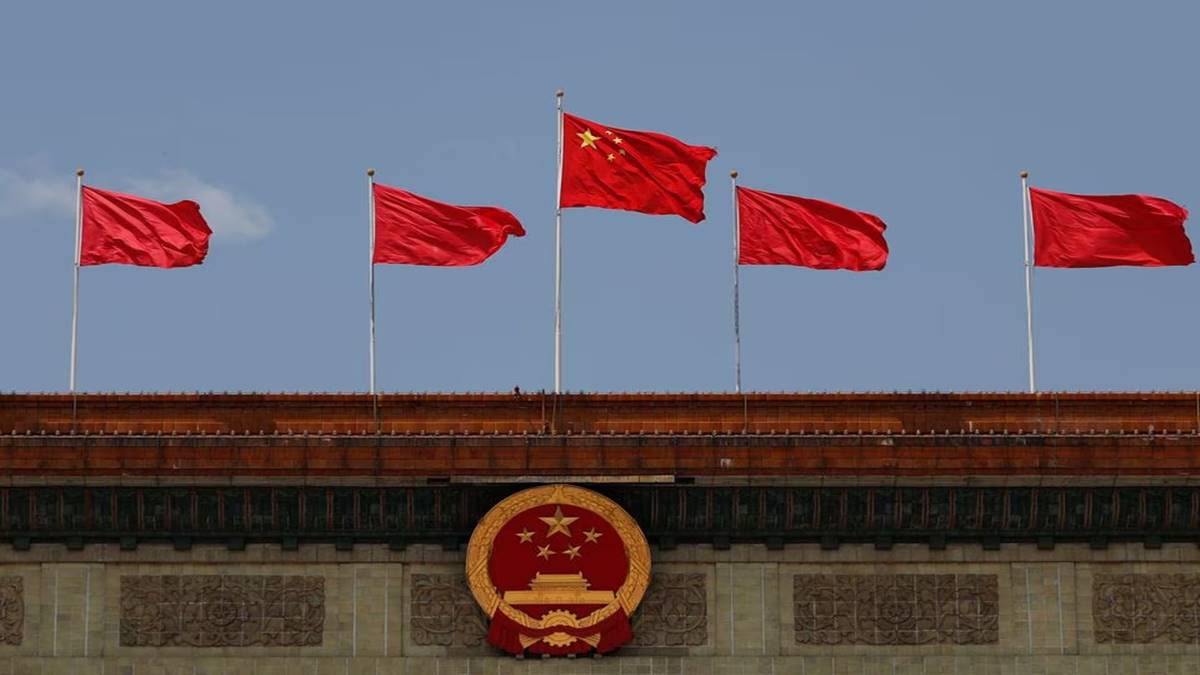China Slides to Brink of Deflation, Adding Stimulus Urgency 2023

China Slides to Brink of Deflation, Adding Stimulus Urgency 2023
The core inflation rate, which excludes the unpredictable costs of food and energy, went down from 0.6% to 0.4%.The rate of decline in producer prices was the worst since December 2015, down 5.4% from a year earlier. Zhang Zhiwei, chief economist of Pinpoint Asset Management Ltd., asserted that “the risk of deflation is very real.”
China, the world’s second-largest economy, faces a significant challenge as it is on the brink of deflation. A deflationary spiral can harm an economy, reducing consumer spending, stagnant investment, and overall economic decline. In response to this looming threat, Chinese policymakers recognize the urgent need to implement stimulus measures to prevent a prolonged period of deflation and support economic growth.

While factory-gate prices in China continued to decline in June, the consumer inflation rate remained unchanged, raising fears about the possibility of deflation and increasing speculation about future economic intervention. The National Bureau of Statistics said on Monday that the consumer price index was unchanged from a year ago for the last month. That rate was the lowest since February 2021, when falling pork prices negatively impacted the index.
Core inflation, which does not include volatile prices for food and energy, decreased from 0.6% to 0.4%. The rate of decline in producer prices from a year earlier was 5.4%, the worst since December 2015. According to Zhang Zhiwei, chief economist of Pinpoint Asset Management Ltd., “the risk of deflation is very real.”
Both indicators show that the recovery is waning, and confidence is affected by deflation worries. More rumours about planned stimulus measures to support the economy are expected to result from this. According to Michelle Lam, Greater China economist at Societe Generale SA, “Today’s data certainly argues for more policy easing, which policymakers are already doing, but only in a measured manner.”

For months, producers have battled weaker commodity prices and sluggish domestic and international demand. If customers and organizations continue to put off purchases or investments in the expectation that prices would decline, this might trigger a downward price spiral. Tech stocks propelled the Hang Seng China Enterprises Index’s 0.7% gain as of Monday’s midday break as investors waited for the country’s regulatory environment to return to normal. Following three weeks of declines, the CSI 300 index of mainland equities increased 0.5%. After the inflation figures, the offshore yuan lost gains of as much as 0.2%.
Deflation is when the general price level of goods and services decreases over a prolonged period in an economy. When there is a decrease in demand for goods and services, businesses lower their prices to encourage consumption.However, this can create a cycle of reduced spending as consumers delay purchases, anticipating further price drops. Deflation can lead to a slowdown in economic activity, increased unemployment, and a decline in asset prices.

Last month, the cost of pork was a significant factor influencing consumer prices. A vital component of the Chinese diet, the price of beef decreased by 7.2% in June versus a year earlier. That was a more significant decline than the 3.2% in May. The government said last week that it would purchase additional pigs for state reserves to increase demand to put a floor under price falls for the meat. Long-term reductions in the price of foreign commodities spurred the deflation of producer pricing. Dong Lijuan, an NBS statistician, noted a high base of comparison with last year and a continuous decline in the price of coal and oil in a statement.
China experienced a prolonged period of deflation in consumer prices back in 2009 during the peak of the worldwide financial crisis. There was a brief occurrence of this same situation in early 2021.Beijing unveiled a $553 billion stimulus programme to improve industry and infrastructure. While that strategy promoted growth at the time, it also encouraged local governments to take on more debt than was permitted by law, which resulted in a ballooning of debt. This time, policy options to combat the prospect of deflation are more constrained, in part because of worries about debt issues.

Factors Contributing to China’s Deflationary Risks:
- Declining Consumer Demand: China has been experiencing a gradual decline in consumer spending due to several factors. These include rising household debt levels, a cooling housing market, and the ongoing effects of the COVID-19 pandemic. Businesses may find it challenging to remain profitable when prices decrease due to a decline in demand.
- Overcapacity Issues: China’s industrial sector has been grappling with overcapacity problems, particularly in industries such as steel, coal, and manufacturing. Overcapacity leads to intense competition among firms, resulting in price wars and a downward price spiral. This situation exacerbates deflationary pressures and creates an environment where businesses struggle to generate sustainable profits.
- Slowing Global Trade: China heavily relies on global trade for economic growth as an export-driven economy. The slowdown in international trade, triggered by trade tensions and protectionist measures, has dampened demand for Chinese exports. This has further contributed to deflationary pressures within the economy.
- Rising Debt Burden: China’s corporate and government debt levels have been a growing concern recently. High debt burdens limit the ability of companies and the government to invest and stimulate economic growth. Debt servicing costs can divert funds away from productive activities, which hampers investment and further contributes to deflationary risks.

Recognizing the severity of the deflationary risks, Chinese policymakers must act urgently to counteract these challenges. Implementing timely and effective stimulus measures can help revitalize the economy and mitigate the risk of a prolonged deflationary period. The following are potential strategies that could be employed:
- Monetary Policy Adjustments: The People’s Bank of China (PBOC) can utilize various monetary policy tools to inject liquidity into the economy. This includes reducing interest rates, lowering reserve requirements for banks, and providing targeted lending to sectors facing significant challenges. These measures can boost borrowing and incentivize businesses and consumers to spend.
- Fiscal Stimulus Measures: The Chinese government can increase government spending and implement tax cuts to stimulate demand. Targeted infrastructure investment, especially in green technology and sustainable industries, can generate employment opportunities and drive economic growth. Additionally, providing direct financial support to struggling sectors can help stabilize prices and prevent deflationary pressures from intensifying.
- Structural Reforms: Addressing the overcapacity issues in industries such as steel and manufacturing requires structural reforms. Encouraging consolidation, improving efficiency, and promoting innovation can help eliminate excess supply and stabilize prices. China can build a more resilient and sustainable economy by transforming and upgrading these sectors.
- Enhancing Social Safety Nets: Strengthening social safety nets, including unemployment benefits and welfare programs, can cushion during economic uncertainty. This will help boost consumer confidence and spending, mitigating the risk of a deflationary spiral.
According to Xing Zhaopeng, senior China strategist at Australia and New Zealand Banking Group, the government has to change its emphasis from supply-side policies to measures that address the demand issues. The Chinese government have historically provided business support through specialized financing instruments, such as those created to help the manufacturing and renewable energy industries. On the other hand, officials have frequently avoided programmes like subsidies meant to assist customers directly. Xing stated that “China is currently facing excess supply” and warned of a deepening “deflation-recession loop.”

China’s slide toward deflation poses a significant risk to its economic stability and growth prospects. The Chinese government needs to act swiftly and decisively to implement stimulus measures to support domestic demand, encourage investment, and prevent the economy from sinking into a prolonged deflationary period. By employing a combination of monetary policy adjustments, fiscal stimulus measures, structural reforms, and enhanced social safety nets, China can effectively address its deflationary risks and foster a path toward sustainable economic growth.




